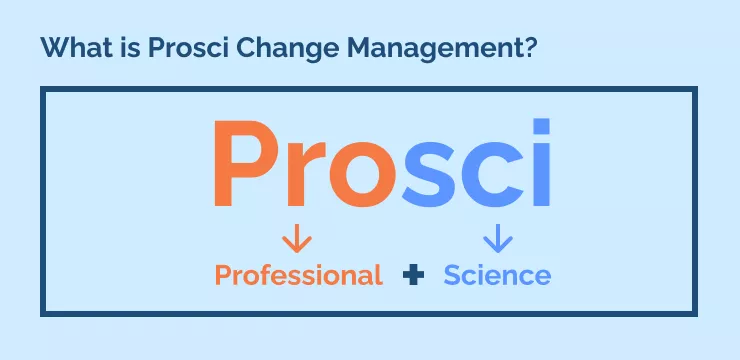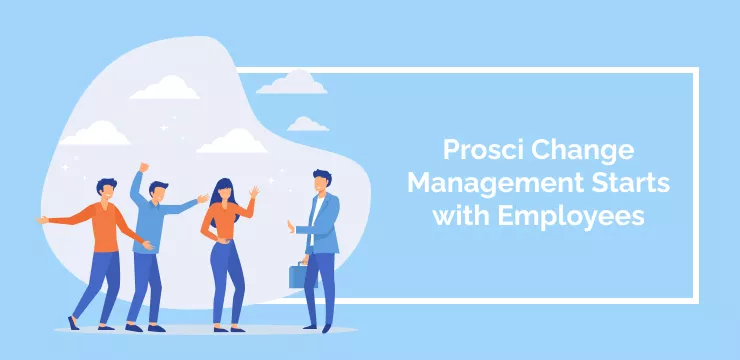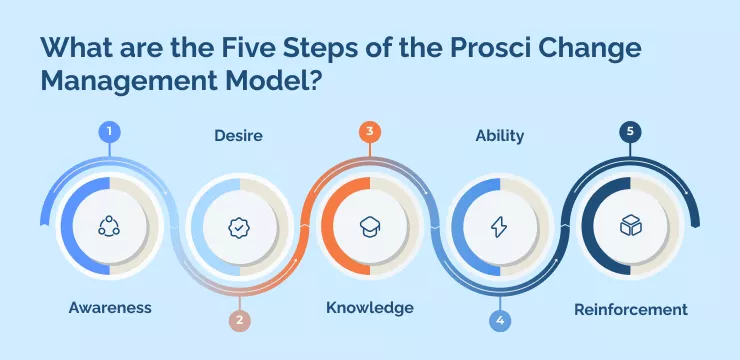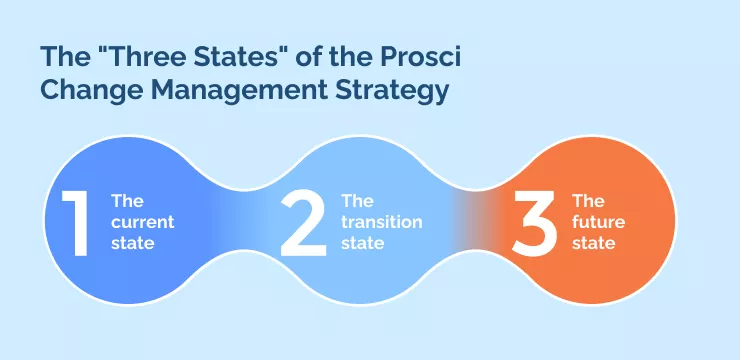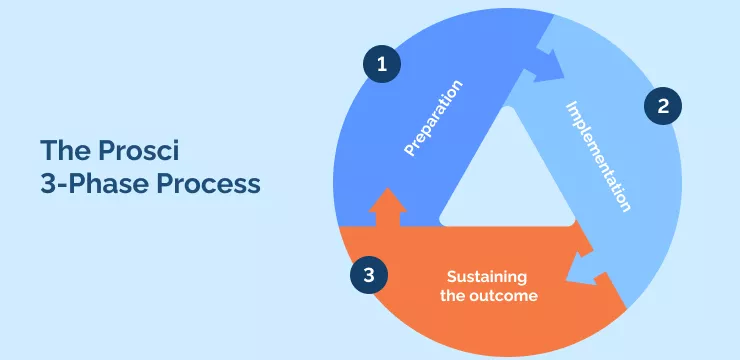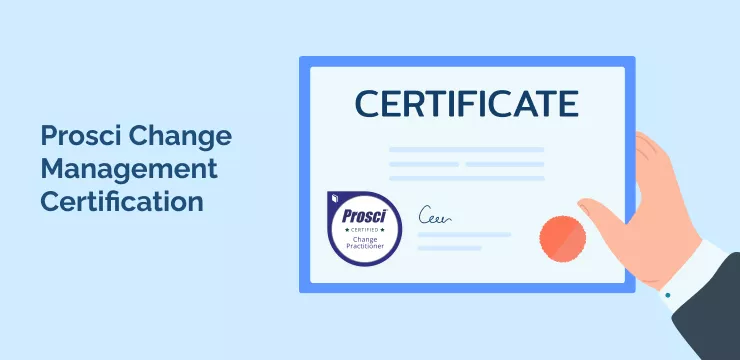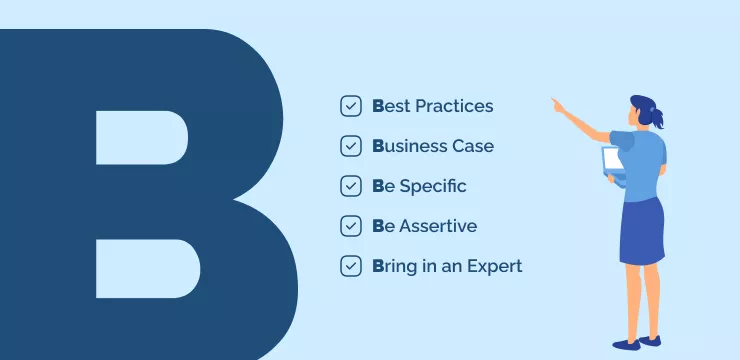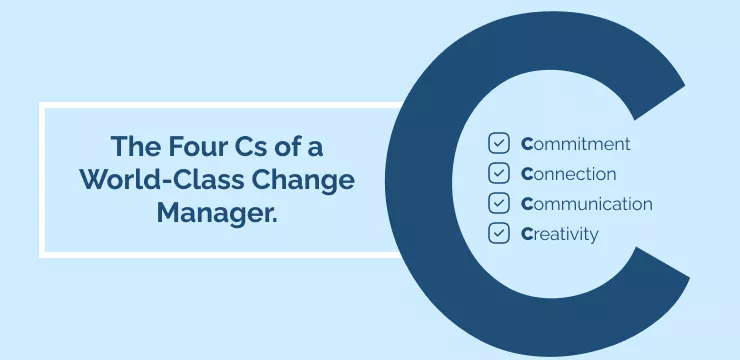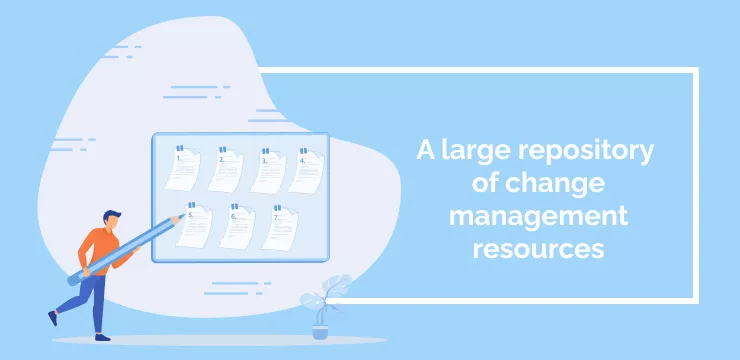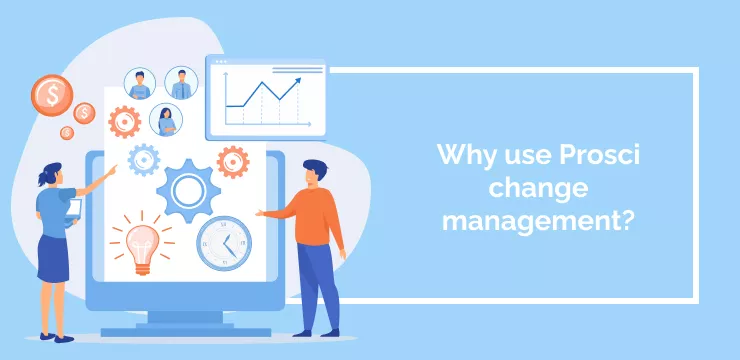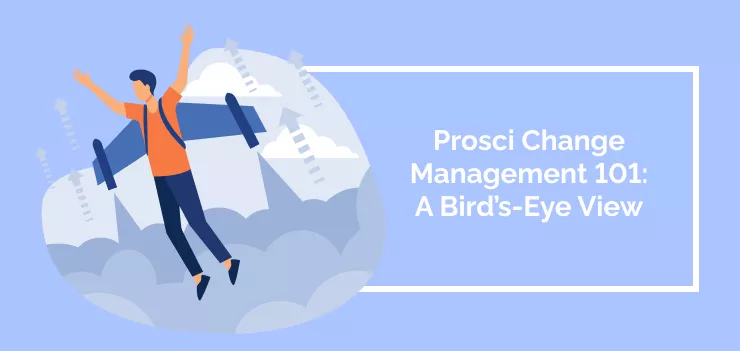
Prosci change management services cover everything to do with organizational change.
Businesses investing in change projects turn to Prosci for research-based consultancy, training, licensing, eLearning, and more. However, Prosci is best known for its three trademarked change models: the PCT model, the 3-phase process, and most famously, the ADKAR model.
In the ADKAR model, Prosci shows how to start a change management process from the bottom up, starting with the individual employee. ADKAR has been proven, time and again, to be a particularly it is a particularly useful method for bringing staff on a change journey. The Prosci methodology stands out from other change management models in this respect.
This article will provide a clear overview of the Prosci technique for managing change. It will pay particular attention to the steps in the ADKAR method, the process of applying these steps, and other services offered by Prosci.
What is Prosci Change Management?
Prosci Change Management is a research-based methodology for managing people and processes during organizational change.
The framework provides practical tools and best practices to help organizations plan, implement, and sustain successful organizational changes. It helps leaders understand how to mitigate any resistance they may face while transitioning to new systems or processes and how to ensure the change is adopted long-term.
The name “Prosci” is the company that developed the methods. It is a contraction of “professional” and “Science.”
The company Prosci was founded in 1994 by Jeff Hiatt. Hiatt developed the Prosci Change Management Methodology after extensive research on best practices for managing successful organizational change initiatives. With more than 20 years of experience and over three million practitioners worldwide, Prosci is now recognized as one of the leading authorities on organizational change.
Prosci Change Management Starts with Employees
For a digital transformation project, technology is only one part of the change. Employees’ motivation, investment, and compliance are all crucial to a successful change initiative. That’s why Prosci change management focuses on company-wide change that happens one person at a time.
Since people represent the driving force of change in an organization, they can also present the most significant obstacles.
For example:
- Fear of change can create resistance to change
- A lack of motivation can slow down an initiative, increase costs, and decrease productivity
- Poor communication can cause employees to feel surprised and trapped, reducing the chances of success
Furthermore, a 2020 Gartner report suggested, “Employees’ risk of change fatigue is higher than ever.” With employees facing many changes, leaders will need help to secure their investment in another new project.
Success or failure change often hinges on whether employees adapt or not.
Prosci’s model addresses this problem from the very start. Each of the five steps of the ADKAR model involves staff in the change process. They all help to embed a successful change in an organization.
What are the Five Steps of the Prosci Change Management Model?
The most prominent part of the Prosci methodology is the ADKAR model. The ADKAR change management model has been under development since 1998 and is used by some of the world’s largest companies. Prosci training sessions focus on the inculcation and application of the ADKAR model.
The acronym ADKAR describes the five stages of Prosci’s change management system. They stand for the following concepts:
- Awareness of the need for change. This step focuses on raising an understanding of why a change must happen. By identifying the drivers for change, change leaders ensure that employees understand why the change is necessary. This awareness should be communicated throughout the organization, from top-level executives to frontline staff. Stakeholders should be made aware of the potential consequences of not making the change and the benefits that will come with it.
- Desire to support the change. The second step motivates employees to participate in the change. It helps people engage with the change and understand why it should be embraced. Change leaders communicate how this change brings value and how it will positively impact the work of every employee in the organization. Leaders will also empower employees to take ownership of the initiative.
- Knowledge of how to change. This stage focuses on how employees can make the change happen. Staff must be taught how to execute the change effectively. To achieve this goal, the change management team will organize an appropriate roll-out of staff training. Staff learns about the new tools they will need to use and any new skills they need to know along the way.
- Ability to demonstrate skills and behavior. In this stage, staff discovers how to apply their knowledge to real-life working situations. They may do this through on-the-job training, coaching, or shadowing opportunities for staff. In an environment of support and collaboration, employees learn how to adapt their working style to the new processes and systems.
- Reinforcement to make the change stick. Reinforcement ensures that the change is sustained and embedded into the organization. To do this, leaders should monitor progress, provide regular feedback on performance, identify any issues or challenges faced by staff, and recognize positive contributions made by individuals toward a successful adoption. Performance metrics can also be used to evaluate change initiatives and ensure that the change is accepted long-term.
The “Three States” of the Prosci Change Management Strategy
The “three states of change support the ADKAR model.”
Prosci uses the three states of change to provide a framework for understanding the process of organizational change. It helps give clarity and structure to the complex process of organizational change and identifies the key steps that need to be taken to implement change successfully.
The three states of change are the current state, the transition state, and the future state.
- The current state is where the organization is currently at. Leaders at an organizational level must investigate their current work systems to identify the changes that could improve their results. As most staff may be happy with the current state, change management professionals will need to work hard to find ways that it can be improved for everyone.
- The transition state is less comfortable. It may even be called a “necessary evil,” as transitioning out of an unproductive routine may feel challenging and unfamiliar. At this stage, change resistance may be at its highest, with many staff digging their heels about the new demands on their working lives. The transition state will be challenging for everyone, and leaders will need to keep a clear vision to deliver excellent outcomes for all participants in the initiative.
- The future state is difficult to see at the start of a change initiative. However, most businesses hope that a combination of ideas, attitudes, and vision will drive successful change for the company’s ongoing success.
The three states are a useful tool for describing the different attitudes, mindsets, and expectations that staff will have during a change process. While decision-making executives will focus on the future state, ordinary employees may face all the transition state’s challenges.
Other Approaches to Change Management from Prosci
Prosci offers a full range of change management tools. By learning about these tools, change management professionals will have the knowledge to handle even the most complex change projects. This section will offer a quick overview of some other ways Prosci supports change initiatives.
The Prosci 3-Phase Process
The Prosci 3-Phase Process is a systematic approach to managing change initiatives. This process consists of three phases: preparation, implementation, and sustaining the outcome. The 3-phase process focuses on bringing change across an organization. It works well with the AKDAR model, which emphasizes the individual aspect.
The PCT (Project Change Triangle) Model
Procsci’s PCT model helps leaders to see what “success” will look like in their organizations.
The model looks at four components: success, people, process, and technology. This model helps leaders to identify the internal and external factors that influence how a change initiative is adopted. It is useful when developing strategies for successful adoption, as it encourages leaders to consider the needs of all stakeholders involved in the change process.
Prosci Change Management Certification
The Prosci Change Management Certification is a comprehensive program that provides participants with the knowledge and skills to become successful change practitioners. This certification offers practical guidance for leading organizational change initiatives, including an overview of best practices, tools, and techniques for successful implementation. Participants gain access to the Prosci body of knowledge and are provided with opportunities to apply their newfound knowledge in a real-world setting.
Organizations can also hire Prosci-certified consultants and change managers through the site, to build change capability, adopt new technology, or adapt to new processes.
The 5 Bs of Executive Buy-In
This set of principles helps obtain buy-in and consensus from company leaders.
As you may notice, Prosci is a fan of catchy acronyms — in this case, the rules all start with the letter B:
- Best Practices
- Business Case
- Be Specific
- Be Assertive
- Bring in an Expert
Though ADKAR itself is bottom-up, this rule set provides a tool that change leaders can use for gaining support at the top levels as well.
The Four Cs of a World-Class Change Manager.
The 4 Cs define criteria for effective change managers, which. Change managers and change leaders can improve their outcomes by developing these qualities:
- Commitment
- Connection
- Communication
- Creativity
Some people will naturally possess these qualities. Others will have to develop them from scratch.
A large repository of change management resources
Prosci offers a variety of resources to support organizations in their change management journey, including tools and templates, learning programs and certifications, research studies, and consulting services. The Prosci Change Management Toolkit is an extensive resource that provides detailed guidelines for implementing successful change initiatives.
Why use Prosci change management?
Prosci’s methods can be an excellent choice for any large company planning a change initiative.
For example:
- Prosci change management is very popular – almost an industry standard
- Their change management certification program is thorough
- A research-based methodology
There’s no question that Prosci offers a coherent and useful approach to change management.
However, Prosci methods do not guarantee a positive project outcome. Its drawbacks include:
- The ADKAR model is useful, but it’s not sufficient to achieve a successful change
- ADKAR only kicks in after change goals have been decided on
- Prosci methodology does not sufficiently consider the organizational structure
- Their certification can be costly
In short, using Prosci methods is a good starting point, but there is no substitute for the experience and wisdom of change leaders.
Learning from Change Management Research
Many change management models exist, including the McKinsey 5 Cs, the Lippitt-Knoster model, Kotter’s 8-step methods, and ITIL frameworks.
However, Prosci’s change management is a leading force in change management and leadership. Their authority in the change management sector means that Prosci methods and certifications are well worth further investigation by anyone who wants to create, manage, and lead change in their organization.
However, it is not the only change management framework. There are many other change management exercises, tools, techniques, and frameworks, some of which have decades-long histories.
It’s important to note not all change practitioners are Prosci-certified, which does not make them less good at their jobs.
WalkMe Team
WalkMe spearheaded the Digital Adoption Platform (DAP) for associations to use the maximum capacity of their advanced resources. Utilizing man-made consciousness, AI, and context-oriented direction, WalkMe adds a powerful UI layer to raise the computerized proficiency, everything being equal.

